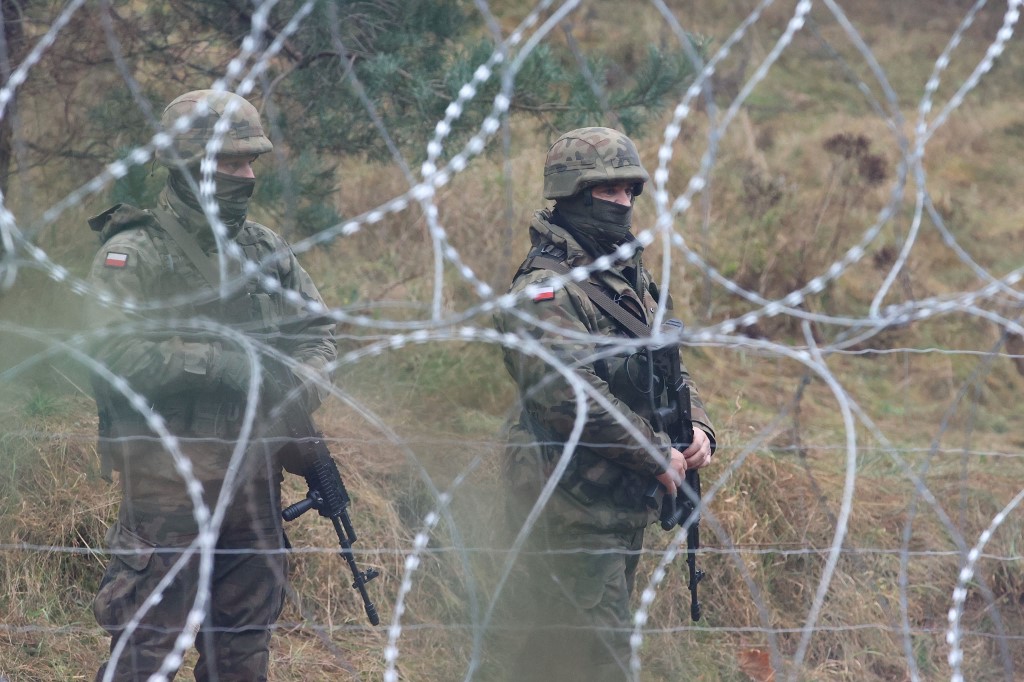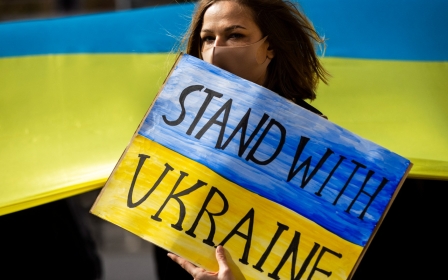How the EU is building parallel asylum regimes for Ukrainians and non-Europeans

The world has watched in shock as more than four million people have fled the war in Ukraine. The massive numbers of the displaced, and the immeasurable trauma wreaked upon them, certainly warrants the term “crisis”.
But the “crisis” that unfolded several months earlier, concerning refugees caught in a diplomatic row between Belarus and the EU, didn’t have to be a crisis at all, having been engineered by Belarus and made possible by the EU’s xenophobia and racism. When contrasted with the generous reception of Ukrainians by EU states and humanitarians alike, the discrimination rotting our asylum and aid regimes has become impossible to deny.
The juxtaposition between the reception of Ukrainians and the refugees pushed back to Belarus has magnified the racism embedded in European asylum policy
Starting in July 2021, thousands of refugees - mostly from Iraq, Afghanistan and Syria - were allegedly lured to Minsk and promised easy entry to the EU. Upon arrival, they were directed by Belarusian border guards to cross the border into Poland. Many hoped to reach Germany.
In response, Poland created an exclusion zone around the border, barring journalists and humanitarians. Doctors Without Borders pulled out in protest of being blocked from providing assistance. At the same time, border guards pushed back refugees with water cannons and tear gas, while construction began on a wall costing 10 times the Polish migration department’s budget.
Pushbacks are so common that it’s easy to forget they violate the core of international humanitarian law, the Geneva Conventions. They also contravene the EU’s own policy on returning “illegally staying third-country nationals”, which stipulates that anyone on EU territory without documentation must undergo relevant procedures and cannot face arbitrary removal.
New MEE newsletter: Jerusalem Dispatch
Sign up to get the latest insights and analysis on Israel-Palestine, alongside Turkey Unpacked and other MEE newsletters
Crippling xenophobia
There was nothing illegal about the actions of the refugees on the Poland-Belarus border. They travelled to Minsk with valid visas. In addition, refugees must cross a border to claim asylum; doing so without documentation therefore isn’t illegal. It is only due to the EU’s crippling xenophobia that their presence was understood as an attempt to “destabilise the EU”.
This racism had human costs. A pregnant Iraqi Kurdish woman and her unborn baby both died, succumbing to hypothermia. A Syrian family lost their one-year-old child, likely due to exposure to sub-zero conditions. A 19-year-old drowned in the river Bug, and the body of a 14-year-old was found in the forest, having frozen to death. In total, at least 21 people, though likely many more, lost their lives in the name of the integrity of the EU’s eastern border.
The juxtaposition between the reception of Ukrainians and the refugees pushed back to Belarus has magnified the racism embedded in European asylum policy.
Ukrainians have been afforded the Temporary Protection Directive, activated by the EU for the first time in March 2022, which affords three-year residency and the right to work upon arrival. Meanwhile, Middle Eastern and African refugees seeking to enter the EU are prevented from even initiating asylum proceedings, in accordance with the EU’s criminalisation of asylum practised in the Spanish enclaves of Ceuta and Melilla, or the Evros region along the Greek-Turkey border.
Sangeetha Iengar, a barrister who specialises in asylum law, terms this the “European exception” - a well-rehearsed approach. “Turkey adopted the 1951 Refugee Convention with a ‘geographical limitation’, assuming full responsibilities for refugees coming from members of the Council of Europe, but granting limited protection to refugees from other countries,” Iengar told Middle East Eye. “As a result, 3.6 million Syrian refugees in Turkey are afforded a lesser, secondary form of ‘temporary protection’ and not the full gambit of legal rights enshrined under the 1951 Convention.”
Newer initiatives have sought to further embed this type of differential treatment, such as the UK’s proposed Nationality and Borders Bill.
Parallel aid regimes
In theory, humanitarian responses should be independent of military and political aims. In reality, the European governments pursuing differential asylum policies also fund humanitarian responses. funding projects restricted to certain nationalities would result in developing parallel aid regimes that explicitly discriminate based on race.
The refugee response in Jordan saw many projects focused on Syrians, in an attempt to keep them from Europe. A vicious cycle developed; with projects focused on Syrians, data on the presence and needs of Iraqis, Sudanese, Somalis and Yemenis was not collected. They became invisible within the humanitarian ecosystem.
There are signs of history repeating itself. The UK Homes for Ukraine scheme excludes those who are not Ukrainian nationals or immediate family members of a Ukrainian national, leaving Yemenis and Syrians studying in Ukraine without protection in neighbouring countries and unable to return home.
In addition to independence, the humanitarian sector commits to the principle of impartiality, understood as helping the most vulnerable first. But concerningly, while the UN launches services for Ukrainians, communications between German Chancellor Angela Merkel and UN agencies around those stranded in Belarus have centred upon their return to their countries of origin - all of which the German government advises against travelling to.
The humanitarian sector also has a duty to fellow humanitarians, four of whom were detained on 23March for helping a family at the Poland-Belarus border - what would be understood as "welcome culture", had the beneficiaries been Ukrainian. If the humanitarian sector doesn’t stand with them, the independence of humanitarian action will be compromised.
It’s an indictment of how far the Overton window has shifted to have to argue that the EU should implement its own humanitarian policies and principles. The response to Ukraine is nascent, but we must act urgently before parallel asylum and aid regimes are entrenched, and more lives are lost.
The views expressed in this article belong to the author and do not necessarily reflect the editorial policy of Middle East Eye.
Middle East Eye delivers independent and unrivalled coverage and analysis of the Middle East, North Africa and beyond. To learn more about republishing this content and the associated fees, please fill out this form. More about MEE can be found here.







